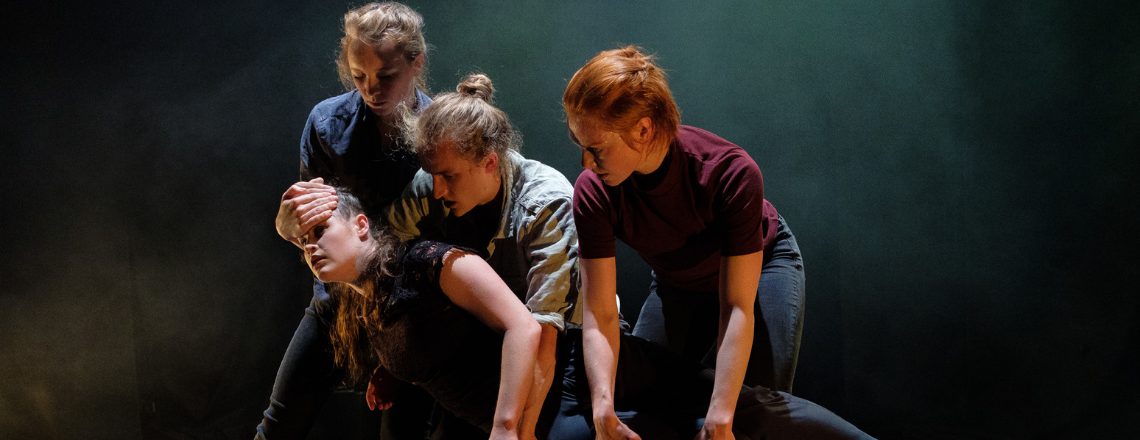From the audience, four dancers emerge to take their place on stage. Together, they proceed to break down the barriers and stigmas associated with depression, drawing the audience into a deeply affecting – and at times disturbing – look at how society and the so-called medical professionals treat those fighting to get out of ‘the box’.
Julia James-Griffiths’ work is underpinned by her interest in psychology and each sequence explores a different battle faced by those who suffer under the crippling weight of this often debilitating, sometimes life-limiting, illness.
Alex McCabe begins the performance by attempting to crawl through four white chairs. It is a seemingly impossible task; he gets tangled up, the chairs don’t respond as they are supposed to, and he appears physically and mentally exhausted from his efforts. Passers-by come into the scene, most either ignoring him completely or worse: seeing him and pretending they haven’t. Eventually someone stops to ask if they can help but McCabe would rather be alone.
Next, Lucy May Wilson suffers an injury with no visible marks. Her ‘friend’, Amy Robertson, can’t understand why she doesn’t just snap out of it, think positively and go for a walk in the sunshine. The unhelpful comment, ‘I’m doing it’, has a particularly jarring effect on Wilson and the audience.
And so the challenges keep coming. Amelia McCarthy, completing the quartet, performs an intense solo sequence portraying just how hard it is to keep moving, the other dancers joining her periodically for beautifully choreographed and danced sections that continue to highlight their pain and distress. Repetition is used effectively, with James-Griffiths’ cleverly varying the dynamics to make a powerful statement – not just about the struggles of being depressed but of the struggles experienced by those closest to those who suffer. A pas de deux is performed by McCabe and McCarthy early on in the show before being repeated later on with a much more lethargic McCarthy. McCabe has to do all the heavy lifting (both literally and metaphorically) and eventually it just becomes too much.
Troubling statistics are woven into the fabric of James-Griffiths’ emotive piece, showing just what a crisis depression is. Wait times of a year or more, a health service far too quick to prescribe anti-depressant medication with a myriad of worrying side effects, and an impersonal ‘rate-yourself-on-a-scale’ diagnostic tool – which does nothing to deal with the core of what is going on in people’s lives – are just some of the systemic issues addressed.
The Box begs to be seen by anyone with an interest or involvement in mental health issues. It is a gripping, emotive look at depression and, despite the difficult subject matter, a deeply engaging and satisfying work.
